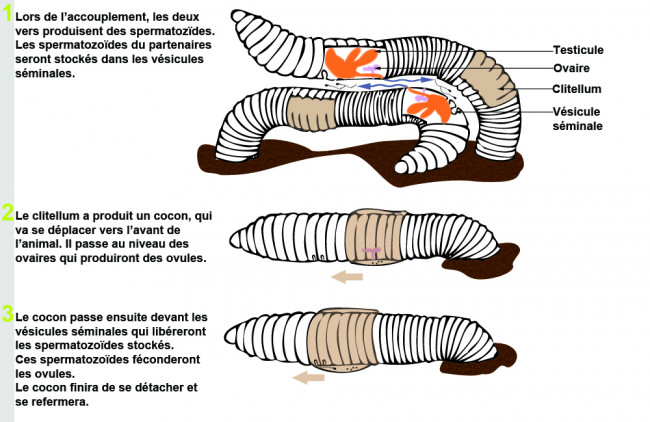Life cycle of earthworms
Both male and female, earthworms have a very particular way of reproduction!

Life cycle of ecological groups of earthworms. © Éve Barlier
Earthworms and anti-sexism
Each worm has both testicles and ovaries, so they are hermaphrodites. Sexually mature earthworms can be recognised by a thickening after the first third of the worm's body, the clitellum.
Surface reproduction
The breeding season for earthworms is mainly in the spring and autumn, when they come to mate on the surface, in wet weather and often at night. To reproduce, two earthworms first stick together head to toe. The two worms then exchange sperm.
The sperm exits through an opening in the 15th ring and is transported through two ducts to the seminal vesicles (9th and 10th segments) of the other worm, where it is stored.
After this exchange, the two worms separate.
From cocoon to worm
At the clitellum, a mucous cocoon is formed. This cocoon gradually slides towards the head of the worm. When the cocoon passes over the 14th ring, some eggs are deposited. These eggs are then fertilised as the 9th and 10th segments pass by the sperm of the other worm (which was stored in the seminal vesicles). Once detached, the cocoon closes, it will be the size of a match head. It takes a few weeks to several months, depending on the species, for the young earthworms to hatch.
The earthworm Lumbricus terrestris (the so-called common earthworm) mates once a year, forming 5 to 10 cocoons each containing 1 egg. They can live between 4 and 8 years!
Eisenia foetida mates more often and forms about 140 cocoons per year, each giving birth to several worms. They live for a shorter time (between 1 and 2 years).


